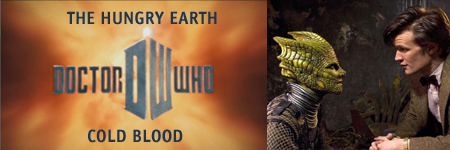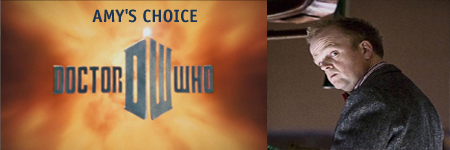The Turning of the Scrooge
Saturday, February 19th, 2011
Is it fair these days to expect a lot from a series/new Doctor/companion/production team Christmas story?
The Eleventh Hour was a story largely about an earthly child who meets a recognisable alien at stages throughout their life, each contributing to inform the adult they would become. One series on with all of the above to take into consideration you’d expect to be seeing much the same thing, the requirements being more or less identical. However, since then the series has been at pains to outdo itself. Series finales and Christmas specials have come and gone, each besting the previous in spectacle. Story arcs have had emotional undercurrents, and the Doctor’s own personal emotional journey is something now traced in parallel with those of his mortal accomplices. Continuity has been built upon, extrapolated, and of course introduced anew, but left open in ways sometimes frustrating to the regular viewer. So how, with all of this beforehand, were Moffat, Wenger and Willis to continue the show – potentially a more daunting task than resurrecting it, without upsetting its faithful viewers while attracting more?
The answer appears to be: change little visually and tonally and change much narratively. Much has been made by now of Moffat’s use of time travel as a narrative device, and of his emphasis on the time-less Doctor on the linear lives of those around him. The latter is uncannily on the button, with Matt Smith’s first ‘real’ scene as the Doctor delayed to great effect. Of course we saw him last Christmas and yes, he’s still very much on-form, but as the story opens who do we meet? Ebenezer Scrooge stand-in Sardick. Not the miserly caricature we’re expecting of course – it’s another instance of delayed gratification, as though Moffat’s saying “I know you know who these people will be, or who you think they will be, but have a look at this instead!”) And of course some of it is a trick. Bits of former stories and beats stitched together form the back-story of A Christmas Carol, particularly Moffat’s own past stories for Who, but as in Rose the story isn’t the thing, rather it’s the meeting of the Doctor and Sardick, and of course Young Sardick is as crucial to the character of older Sardick, as his love for the poor, doomed Abigail is, as witnessed in the Doctor’s gradual visits. It’s clever of the writer to play on this; for the past five years we’ve become used to finding out little bits about the Doctor – his recent past, his world, feats, mistakes and personality. Here Moffat mines the other aspect of the established Scrooge story, and gives us someone whom we initially despise, then find ourselves asking more questions about as the story unfolds. By the end of the tale whether you saw the countdown on Abigail’s casket or not, MOffat’s hooked us in with the catankerous old miser, and the result is probably the best and definitely the most Christmassy special of the new series yet.
It’s difficult to review Matt Smith’s performance without echoing so many reviews already available – very physical yes, but in a less-stagey way than his predecessor’s affectations. This new Doctor moves in mysterious ways, but in a natural manner – Matt Smith is either some sort of genius or he’s genuinely like this – all fingers and thumbs, near-constant expressions of surprise and gangly walk. In the body of another actor it could make for a tiring show – so much of this screams how NOT to play the Doctor, but I don’t think Smith is putting anything into his performance that isn’t already there (certainly his Jonathan Ross interview demonstrates much the same body language). Tempering this is a less manic style which takes him away from simple caricature and into something just as believable and natural. I think he’s a truly engaging figure, and can only agree that he is a real ‘find’ for the Doctor – young, physical, charismatic, but comfortably distanced from those same notes hit by David Tennant. His quiet moments with the Young Sardick were the highlight for me, but I do wonder how much longer the showrunner can rely on the gimmick of his ability to traverse established history. Something to look out for in stories to come.
It could be an interesting ride, and perhaps that’s the key-word to Moffat’s new style, ‘revision’. After five years the risk of things going stale was palpable – particularly after what almost amounted to a year-off with heavy saturation for Christmas in Tennant’s the previous year (it seems so much longer ago now!) You get the feeling that Matt Smith’s Christmas offering is ever-so-carefully weighed and measured to ensure enough familiarity is there while opening up new ways to bring the audience in. And it’s carried off so well, and so very effortlessly – a companion to the bombast and spectacle of the RTD era (a flying shark!), but skewed enough emotionally to unseat one’s expectations from time to time. I’m happy to say I laughed a lot during this episode, and warmed once more to Smith’s interpretation (isn’t he good with kids?). Perhaps in summing up I could say that what needed the sense of change was not so much the series, but, like the story’s anti-hero himself, this ever-so-humble viewer. And I’m happy enough with that.





 (spoilers follow below the fold)
(spoilers follow below the fold)


